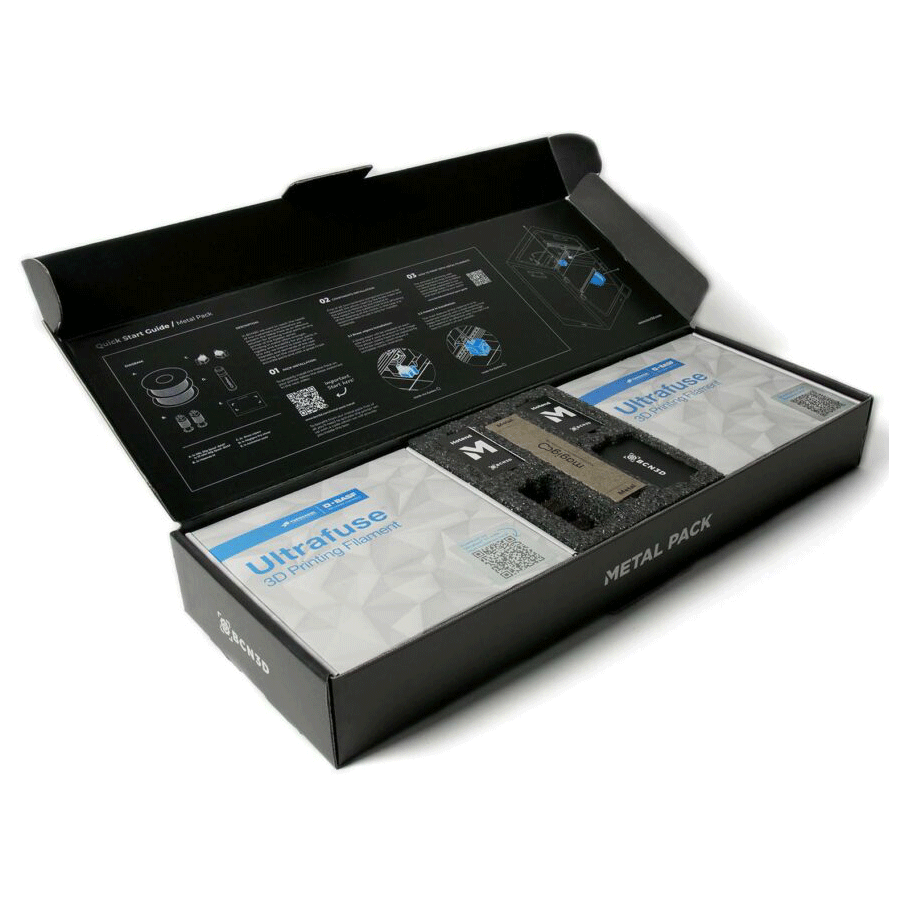w3c



The Metal Pack is an upgrade for the current Epsilon Series that opens up a new range of applications for BCN3D customers, especially for spare parts, functional prototyping, and tooling, and is mainly aimed at the pharmaceutical, food, automotive, aerospace, and manufacturing sectors. The parts produced by this process have practically identical behavior to those produced by MIM or CNC and offer an office-friendly solution with far more design freedom.
The Metal Pack includes both Ultrafuse® 316L and 17-4 PH, and a new exclusive hotend for metal, as well as specific accessories, to ensure a smooth printing experience. BCN3D has created a new printing profile for metal for the BCN3D Stratos slicer that avoids the internal tensions of the printed part during the printing process. After printing, debinding and sintering processes can be carried out externally through the current Forward AM authorized network of service suppliers.
Ultrafuse® Metal Filaments portfolio has been developed based on BASFs decades of know-how within the Metal Injection Moulding (MIM) industry.
The process is divided into 3 steps: printing a part with the BCN3D Epsilon 3D printers and the subsequent industry standardized debinding and sintering, done externally through Forward AMs current authorized network of suppliers. The result is a final part which is nearly 100% solid stainless steel.

For the printing process, filaments Ultrafuse® 316L and 17-4 PH contain high levels of stainless steel in combination with polymer binders which allow easy printing. The binder content from the printed part is removed through a catalytic debinding process. For the next step, the part undergoes a subsequent sintering process at temperatures right below the melting temperature of the metal, which causes the metal particles to coalesce. The material then reaches its final state through post-sintering, where it achieves required performances in aspects such as hardness and strength.

The recommended BCN3D & BASF D&S providers that offer sintering and debinding services are:
For more information on the metal workflow, please read the following guidelines from our customer support team: https://support.bcn3d.com/knowledge/3d-printing-metal-workflow
We carried out several tests at BCN3D to properly understand the final results that can be obtained with our printers. The following are the best results weve achieved with metal. We strongly recommend that you create your own iterations to get the right accuracy on your specific design to compensate for the shrinkage:
Achieved density with Epsilon Series: 7.74 over 7.85 g/cm3 (98.59%).
Shrinkage with Epsilon Series: 19% XY / 24% Z (it depends on the geometry).
Maximum accuracy achieved with Epsilon Series: up to ±0.09mm XY / ±0.04mm Z.
In the chart below, you can find the differences between 316-L and 17-4PH:

The metal printed pieces can be treated the same way as steel manufactured parts are treated in traditional ways, creating a wide range of possibilities to improve the finish of the piece.
In this article, we explain the different processes you can perform on your pieces to improve the surface quality: https://support.bcn3d.com/knowledge/postprocess-metal-parts